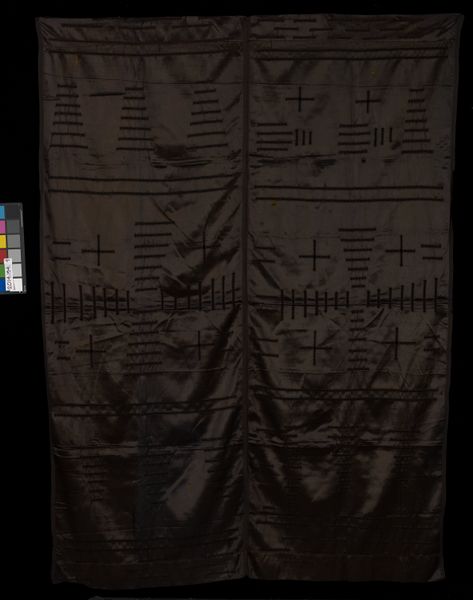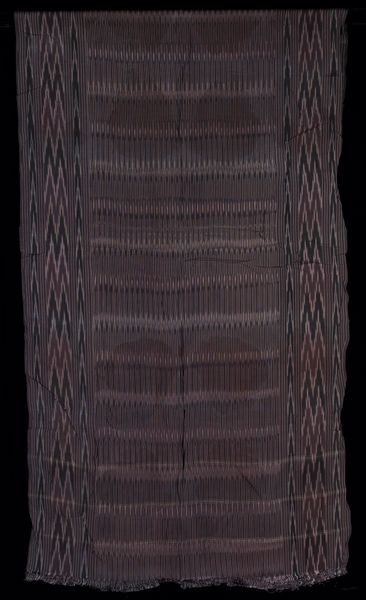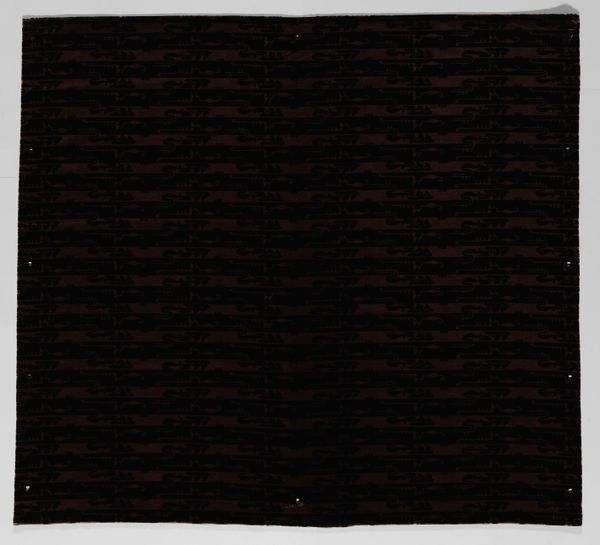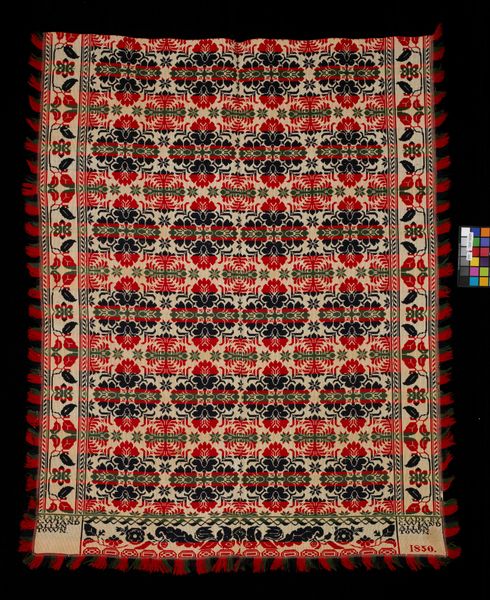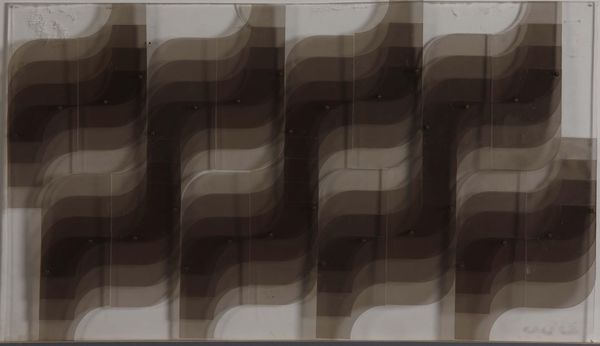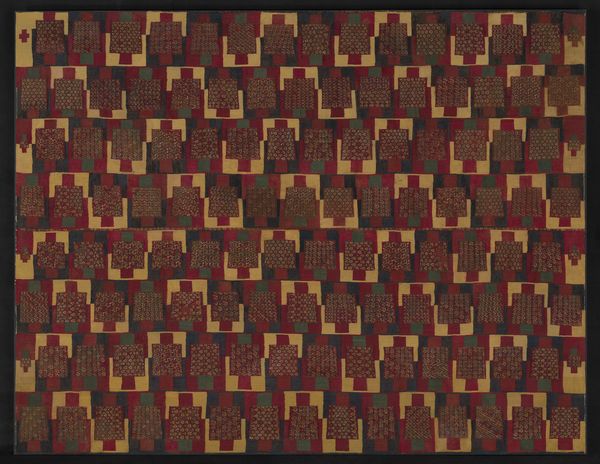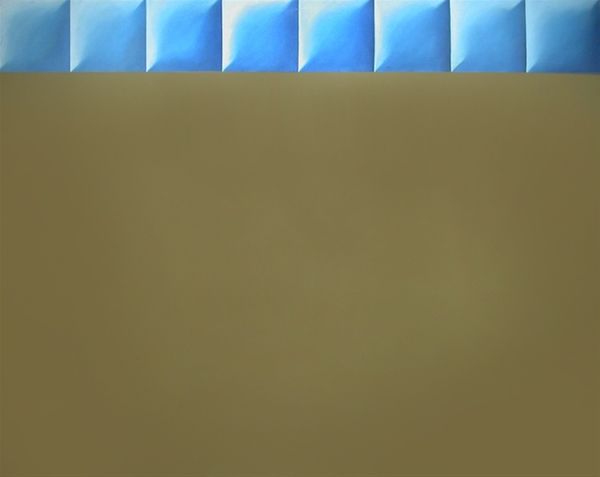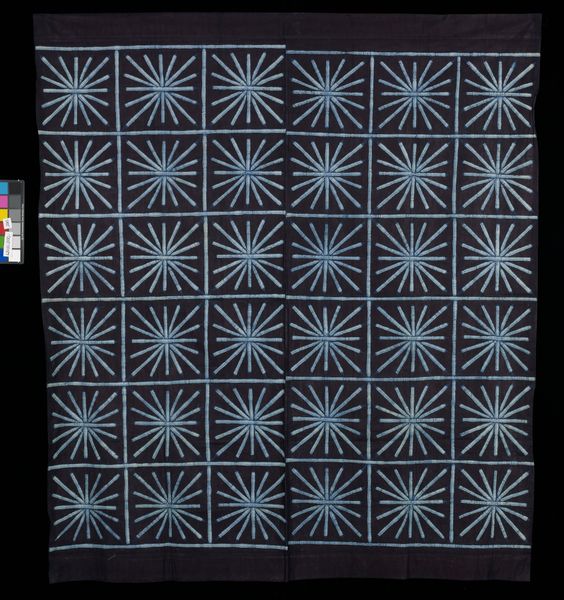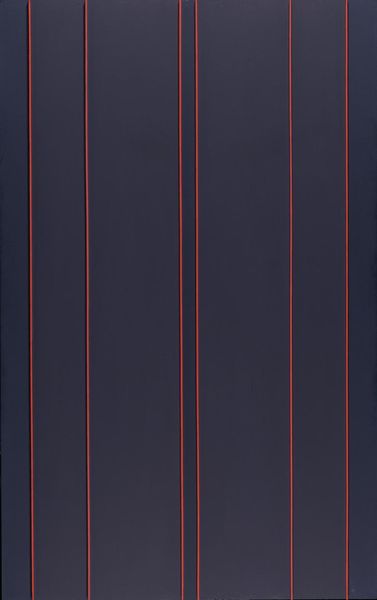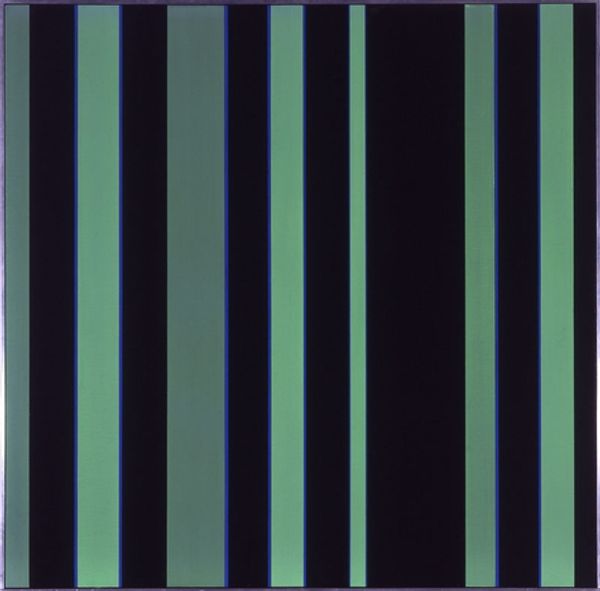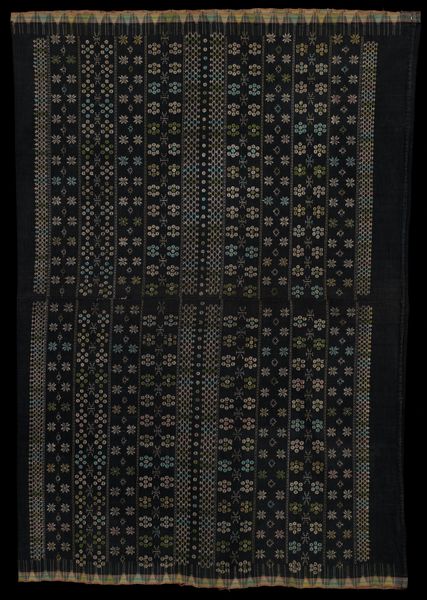
textile
#
textile
#
geometric
#
line
#
yoruba-art
Dimensions: 59 1/2 x 74 3/4 in. (151.13 x 189.87 cm)
Copyright: Public Domain
Curator: Looking at this textile, I immediately sense a deep, calm rhythm, like rain on a windowpane at night. Editor: Indeed. This is an exquisite "Panel" of textile, believed to be from the 20th century, created within the Yoruba tradition. It resides here at the Minneapolis Institute of Art. The use of line, color, and material create a harmonious dialogue, speaking to both the spiritual and aesthetic values of its culture. Curator: You know, for all its seeming simplicity—just stripes, really—there's something mesmerizing about it. The way those pale yellow lines interact with the indigo base, punctuated by the softer mauve, evokes a feeling of depth. It is both visually satisfying and spiritually profound. Editor: The seemingly simple lines are actually steeped in symbolism and masterful technique. This likely involves ikat weaving, a resist-dyeing method used to pattern the threads before weaving. The Yoruba are renowned for their skill in this and other textile arts, viewing cloth as both a material object and a canvas for cultural expression. Curator: So each imperfection, each slight blur of the lines, isn’t a flaw but rather evidence of the human hand, the artist's presence. That intimacy with the maker makes it much more affecting, doesn’t it? You are reminded of where the art comes from, it is born of somebody's craft, as opposed to a computer printer for example. Editor: Precisely. And consider the geometry, or its implied geometry: vertical lines and its repetition are quite important in visual languages. You can think about the warp and weft in that weaving process, each individual decision that must have taken place with that pattern to come into being. Curator: It feels more like a visual poem, with those colors being a palette for an abstract poem to exist. And to have survived and be preserved is also very telling. It carries generations with it. Editor: Absolutely. Each time one engages with an artwork from another culture, it's an opportunity to enrich one’s own perspective, an invitation to witness something special.
Comments
No comments
Be the first to comment and join the conversation on the ultimate creative platform.
